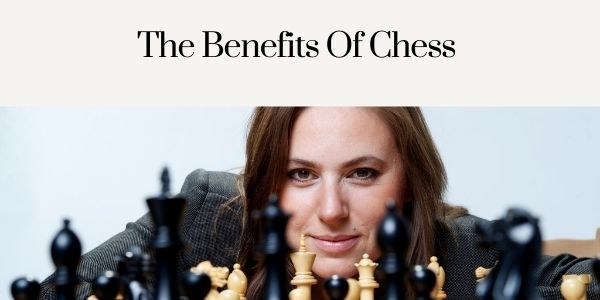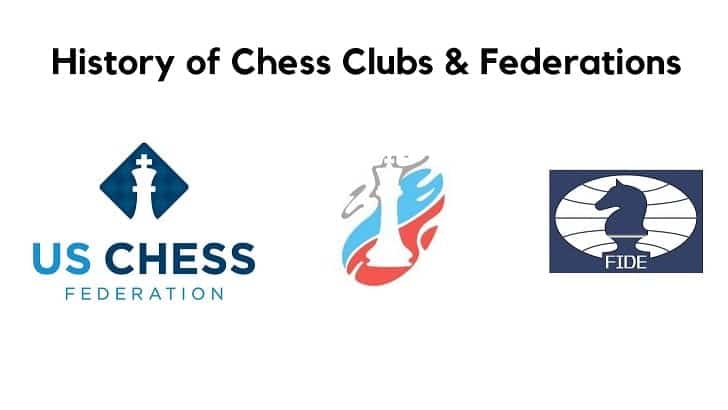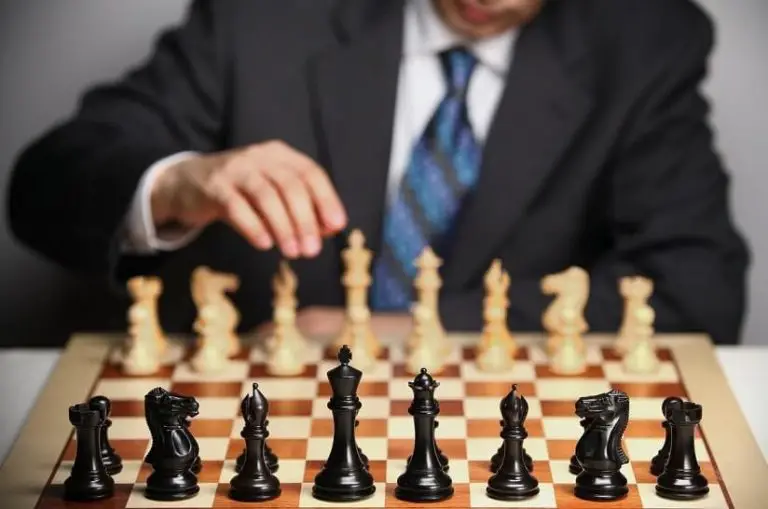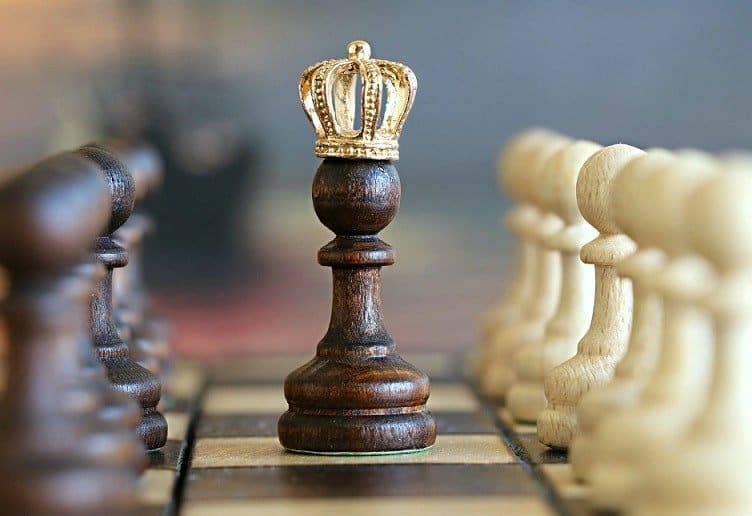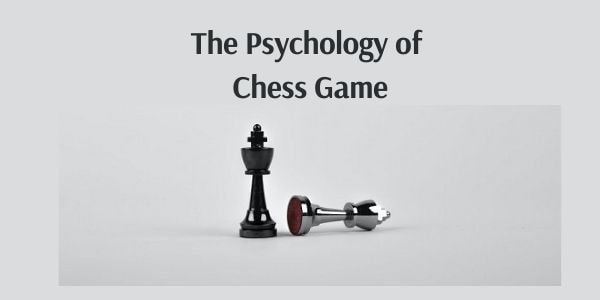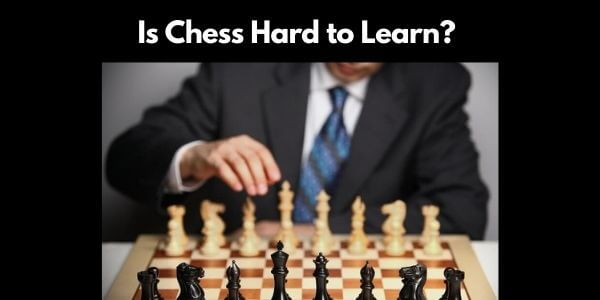Chess Master’s Mind: How Do Chess Players Think?
Chess, the game of kings, has been entrancing minds and sparking intellectual battles for over a millennium. Its 64 squares are a battlefield, where two minds engage in a thrilling duel of strategy, tactics, and sheer mental agility. For the uninitiated, it can seem like a realm of enigma. For the seasoned, each piece, each square, each move becomes a part of a fascinating cognitive labyrinth.
But what goes on in the mind of a chess player when they are gazing, deep in thought, at the checkered board? What psychological cogs turn, and what mental gears shift as they plan their triumphant checkmate?
Embarking on a quest to decode the intricate cognitive journey behind every chess move, we invite you to delve deep into the captivating world of rooks and bishops, kings and queens, and above all—the minds that master them.
From seasoned grandmasters who can perceive dozens of moves ahead to novices learning to recognize patterns, we’ll explore the fascinating blend of intuition, calculation, memory, and psychology that makes chess much more than just a game.
Whether you’re a passionate chess enthusiast, a curious learner, or just someone captivated by the wonders of the human mind, this exploration promises to offer fresh insights and stir intrigue. So, are you ready to decode the enigma? Let’s delve into the mysterious, intellectually stimulating realm of chess, decoding the cognitive journey behind every single move.
The Role of Experience and Intuition
Experience and intuition form the backbone of a seasoned chess player’s cognitive process. They weave an intricate, intangible tapestry, allowing players to see beyond the obvious and decode the enigma that is the chessboard.
Experience: The Invaluable Teacher
Chess players don’t become masters overnight. Experience, acquired over countless games, is their most invaluable teacher. Each move, each victory, each defeat, they add a layer of understanding, a nugget of wisdom to their cognitive repertoire.
For instance, a chess player’s proficiency in executing complex moves, such as a checkmate with a bishop and knight, is typically honed over many games. In the early stages, players often fumble, misstep, or even overlook opportunities. Yet, each miscue is a stepping stone, contributing to the evolution of their game.
Experience transforms raw knowledge into polished skill. It turns the ‘how’ of checkmate with bishop and knight into an almost instinctive reaction—a testament to the power of experiential learning.

Intuition: The Silent Navigator
While logic and analysis form a crucial part of a chess player’s toolkit, intuition often acts as their silent navigator. This isn’t about hunches or wild guesses—it’s a deep, subconscious processing ability that skilled chess players develop over time.
Consider the world of chess prodigies. These young talents exhibit a remarkable knack for intuitively grasping complex chess strategies, often making moves that baffle even seasoned players.
But how does this intuition manifest itself? It’s largely a matter of pattern recognition and rapid decision-making:
- Pattern Recognition: Over time, chess players develop an uncanny ability to recognize patterns on the chessboard. These patterns, some of which date back to the rich history of chess, become ingrained in their memory. This allows them to quickly identify threats, opportunities, and potential strategies without conscious thought.
- Rapid Decision-Making: Equipped with a library of patterns and a wealth of experience, chess players can often make rapid, effective decisions. This ability is particularly critical in speed chess or when the chess clock is running low on time.
A chess player’s mind, thus, becomes a fascinating interplay of experience and intuition, logic and instinct. Together, these elements unravel the mystery of the 64 squares, fueling the timeless allure of the game.
Planning and Strategic Thinking
To the casual observer, chess may seem a series of reactionary moves. Yet, for the players locked in this cognitive combat, every move is a culmination of extensive planning and strategic thinking. They’re not just responding to the present, they’re shaping the future—a future painted with possibilities, threats, opportunities, and gambits.
Mastering the Art of Long-Term Planning
Long-term planning in chess is akin to a grandmaster architect’s vision. Players must not only navigate the current state of the board but also envision the next 10, 20, or even more moves ahead. This advanced anticipation, often influenced by a vast array of opening principles, lays the foundation for their game plan.
An engaging example of this can be seen in the execution of well-established openings such as the Queen’s Gambit Opening or the Sicilian Defense. These openings are deeply studied and allow the player to anticipate several moves into the future.
Long-term planning involves:
- Visualization: Players envision multiple potential scenarios, extrapolating the impact of each move in the context of their overarching game strategy.
- Risk Assessment: They weigh the pros and cons of each move, understanding the potential pitfalls and opportunities it may create.
- Adaptation: Plans are rarely static. Chess players must constantly adapt their strategies based on their opponent’s moves, making flexibility a crucial aspect of long-term planning.
The Influence of Strategic Thinking
Strategic thinking is what makes chess a truly intellectual game. While the rules of chess are easy to learn, as described in our guide on basic chess rules, the strategic depth of the game is what sets apart amateurs from professionals.
Strategic thinking influences decision-making at every juncture:
- Piece Development: Strategic thinking guides the initial deployment of pieces, determining which squares offer the most tactical advantage.
- Control of the Center: Dominance in the center of the board is often a strategic objective, providing greater mobility and attack potential.
- King Safety: Ensuring the king’s safety, either by careful positioning or timely castling, is always a strategic priority.
- Pawn Structure: Strategic decisions influence pawn structure, which can impact piece mobility and endgame possibilities.
One perfect example of strategic thinking is understanding the importance of certain pieces at different stages of the game. For example, understanding why the knight is important in chess can offer a significant strategic advantage in certain positions.
In the heart of every chess duel, planning, and strategic thinking intertwine, creating a mesmerizing ballet of cognitive prowess. Every move becomes a statement, every piece a messenger of the player’s strategic intent. It’s this intellectual depth that makes chess a game for the ages, captivating minds across centuries.

Tactical Thinking and Calculations
While the strategy might be the general, tactics are the soldiers. They are the practical implementations of a grander plan, the tangible manifestations of invisible strategies. Tactics are all about ‘here and now,’ focusing on immediate actions that can provide tangible advantages. In chess, tactics often involve sequences of moves, called combinations, that can dramatically shift the balance of the game.
Calculation: The Core of Tactical Thinking
Chess players engage in extensive calculations, mentally juggling multiple sequences of moves to anticipate their outcomes. These calculations often extend several moves deep, considering possible responses for each player.
A typical process of tactical calculation involves:
- Candidate Moves: Identify potential moves that could lead to a promising position or create opportunities for a tactical combination.
- Visualization: Visualize the board’s state after each candidate move and possible responses from the opponent.
- Evaluation: Assess the resulting positions, considering factors like piece safety, control of key squares, threats, and potential for future attacks.
For example, the Endgame Rook vs Pawn scenario is one where a player’s calculation ability becomes critical. It’s all about examining different move sequences to transform that pawn into a queen, or conversely, to prevent the pawn’s promotion.
The Role of Tactical Thinking
Tactical thinking is the engine that propels strategic plans into action. It revolves around creating immediate threats, seizing opportunities, and maintaining the initiative.
The role of tactical thinking often becomes more pronounced as the game progresses, especially when players reach critical positions that could turn the tide of the match.
Key aspects of tactical thinking include:
- Forks: A move that attacks two or more pieces simultaneously.
- Pins: A situation where a piece is immobilized because moving it would expose a more valuable piece to capture.
- Skewers: A move that attacks two pieces in a line, similar to a pin but with a more valuable piece in front.
- Discovered Attacks: A move that unleashes a latent attack by moving a piece out of the way.
It’s worth noting that while tactics and strategy may seem different, they’re two sides of the same coin. Strategies often create the conditions for tactical opportunities, while tactics help realize strategic objectives.
The Danish Gambit, for instance, involves a strategic plan of sacrificing pawns early to gain a lead in development and launch a swift attack. This strategy naturally leads to rich, complex positions ripe with tactical possibilities.
Understanding the synergy between strategy and tactics is essential to mastering the art of chess. It’s this delicate interplay that lends the game its intellectual charm, making it a fascinating study of cognitive brilliance.
Emotional Control and Psychological Tactics
In the battlefield of the chessboard, the mind is the true arena. Chess is not just about outmaneuvering your opponent on the board, it’s also about outwitting them mentally. Emotional control and psychological tactics play a pivotal role, turning the cerebral game into a nuanced psychological duel.
Maintaining Composure: The Emotional Game within the Game
Amid the tensions of a high-stakes match, maintaining emotional composure becomes as important as executing a well-planned strategy. The ability to stay focused, calm, and composed can often tip the scales in favor of the player who masters it.
The benefits of chess are not limited to enhancing cognitive abilities but also extend to fostering emotional intelligence. Here’s how top players manage their emotions during the game:
- Mindfulness: Players strive to remain in the present, focusing on the board and not getting distracted by past mistakes or potential future outcomes. Meditation, as discussed in our article on how meditation helps chess players, can be a great tool in developing this mental discipline.
- Stress Management: Players manage their stress levels to avoid hasty decisions and tunnel vision. This includes techniques like deep breathing, visualization, and positive self-talk.
- Emotional Detachment: They avoid getting emotionally attached to specific pieces or strategies, understanding that sacrifices and plan changes are often necessary.
- Resilience: They develop the ability to bounce back from setbacks, using mistakes as learning opportunities rather than dwelling on them.
Psychological Tactics: The Unseen Moves
Beyond the visible maneuvers on the chessboard, players often employ psychological tactics to unsettle their opponents or gain a competitive edge.
Psychological tactics include:
- Time Pressure: By moving quickly, a player can put their opponent in time pressure, leading them to make rushed, less-than-optimal decisions. It’s essential to understand how to use the analog clock in chess to manage time effectively.
- Opponent’s Style Exploitation: A player can tailor their approach based on the opponent’s known playing style. If an opponent prefers open positions, a player might steer the game towards a closed position, forcing the opponent out of their comfort zone. Our article on chess psychology delves deeper into this fascinating aspect of the game.
- Feigning Indecision or Confidence: Players may project false signals to mislead their opponents, such as appearing unsure when they have a winning combination or exuding confidence when they are in a tight spot.
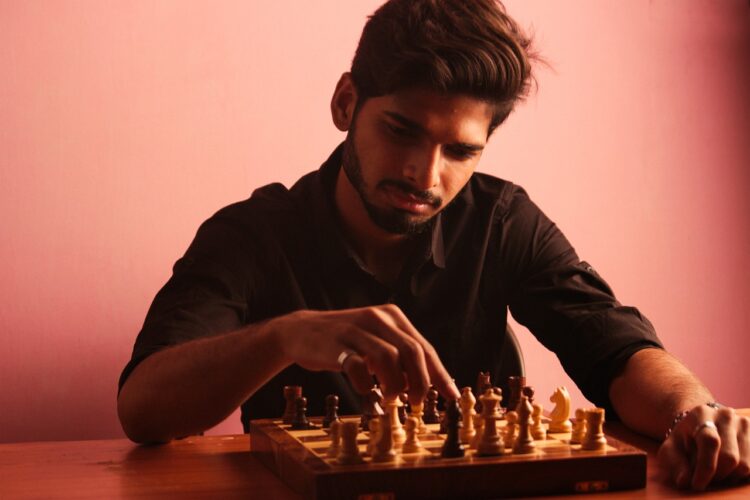
In essence, emotional control and psychological tactics turn chess into a deeply human game, where understanding your opponent can be as valuable as understanding the position on the board.
The Role of Memory in Chess
In the enthralling realm of chess, memory is not just a supporting actor but a co-star sharing the spotlight with strategy and tactics. From recalling well-treaded opening lines to summoning the echoes of historic matches, a player’s memory is often their most trustworthy ally.
Memory: The Invisible Arsenal
A chess player’s memory serves as an invisible arsenal, stocked with patterns, sequences, and moments from games past. But how exactly does memory wield its influence in the game of kings?
- Opening Repertoire: Chess openings are the prelude to every game, and players often memorize extensive opening lines to gain an early advantage. If you’re a beginner, our article on chess opening principles can provide a good starting point.
- Endgame Patterns: The endgame is where many battles are won or lost. By committing endgame patterns to memory, players can navigate these crucial stages more effectively. You can learn about some common endgame scenarios in our articles on checkmate with bishop and knight or queen vs. pawn endgame.
- Historical Games: Many players study and remember games from chess history, drawing inspiration and insights from grandmasters of the past. Learn more about the fascinating history of chess and the role memory has played in its evolution.
Chunking: A Cognitive Shortcut to Chess Mastery
The concept of ‘chunking’, rooted in cognitive psychology, is a key component of the memory strategies used by expert chess players. But what is chunking, and how does it apply to chess?
‘Chunking’ is the process of grouping separate pieces of information into a larger whole – a ‘chunk’ – to improve memory and information processing. In the context of chess, a ‘chunk’ could be a specific configuration of chess pieces, a well-known tactical pattern, or a common endgame position.
Benefits of chunking in chess include:
- Efficient Information Processing: By recognizing chunks, players can process complex board positions quickly and accurately, freeing up cognitive resources for strategic planning and calculation.
- Faster Pattern Recognition: Chunking helps players quickly recognize tactical opportunities or threats on the board, as they can match these patterns with chunks stored in their memory.
- Enhanced Learning: Chunking allows players to build a mental library of chess patterns and positions, aiding in the learning and mastery of the game.
Whether you’re just beginning your chess journey with a travel chess set or have been exploring the 64 squares for years, memory is an invaluable tool in your chess toolkit.
Training the Chess Player’s Mind
Just like athletes training their muscles for optimum performance, chess players engage in rigorous mental workouts to hone their skills. The journey from beginner to grandmaster requires a blend of commitment, discipline, and innovative learning strategies.
Time-Tested Strategies: The Chess Player’s Training Regimen
Chess mastery is not born out of thin air; it’s crafted with persistent effort and strategic learning. Let’s break down some popular methods chess players use to train their minds.
- Puzzles and Tactical Problems: Solving chess puzzles allows players to develop their tactical acuity and pattern recognition. Challenging tactical problems can be likened to a virtual gymnasium for the mind, strengthening problem-solving skills and fostering a tactical mindset.
- Game Analysis: By studying their past games, players can pinpoint their strengths and weaknesses, learning valuable lessons from both victories and defeats. Likewise, analyzing games of renowned players provides an opportunity to learn from the masters themselves.
- Endgame Studies: Mastery of endgames is a crucial aspect of a player’s training. Specific endgame studies, like the queen vs. pawn endgame or checkmate with bishop and knight, provide useful insights for navigating these critical positions.
- Book Study: Chess literature offers an extensive resource for learning. From opening guides to deep analyses of grandmaster games, the written word remains a powerful tool in a chess player’s educational arsenal.
Technology: The Modern Chess Coach
With the dawn of the digital era, technology has become an integral part of chess training. Today, software programs and online platforms offer unprecedented learning resources and opportunities for practice.
- Training Software: Many chess players use software like ChessBase or Chess.com to access vast databases of games, try out different strategies, and analyze their games. Some even offer adaptive training programs tailored to a player’s skill level.
- Online Tutorials: Online platforms host a wealth of tutorials and lessons covering every aspect of the game. These resources, often featuring grandmasters and top coaches, bring high-quality instruction within reach of any player with an internet connection.
- AI Opponents: Artificial Intelligence has revolutionized chess training. Programs such as Stockfish or AlphaZero allow players to spar against formidable AI opponents, offering a rigorous and adaptable challenge.
The journey to chess mastery is as exhilarating as it is challenging. Whether you’re a novice hoping to improve your game with our chess tips for beginners or an experienced player aiming to reach new heights with the help of modern chess software, training your mind is the first and most crucial step.
Conclusion: The Grandmaster’s Mind, Demystified
Unraveling the cognitive tapestry of a chess player’s mind is a journey through strategic planning, tactical calculations, emotional control, psychological tactics, pattern recognition, and the power of memory. Understanding these mental processes helps illuminate not just the complexities of chess, but also the fascinating capabilities of the human mind.
From chess prodigies like Bobby Fischer and Judit Polgar who displayed uncanny prowess at a young age, to the grandmasters who have devoted their lives to the game, the mental acuity demonstrated by chess players is truly awe-inspiring. Each move on the 64 squares is a testament to hours of practice, innate talent, and undying passion for the game.
Chess is more than just a game; it’s a mental marathon, a mirror to our own thought processes, and a lifelong journey of learning. As French chess legend François-André Danican Philidor once said, “The pawns are the soul of chess.” Understanding how chess players think brings us closer to the heart of this timeless game, bridging the gap between the chessboard and our everyday lives.
To deepen your understanding of the game, explore further topics like the history of chess clubs and federations, the benefits of chess, and the psychological aspects of the game. Check out our articles on the history of chess and the benefits of chess. You might also enjoy our piece on chess psychology and how players utilize it to their advantage.
We invite you to engage further with this ancient game, whether by purchasing a quality chess set, studying the grandmasters’ favorite opening principles, or exploring the world of chess strategies in real life.
Chess is a lifelong journey of learning, and we at Mrs. Checkmate are excited to accompany you on that journey. Whether you are a beginner looking for tips to improve your game, an avid fan interested in the history of the game, or a seasoned player looking to expand your knowledge, there’s something here for everyone.
Finally, if you’re curious to learn more about the intricacies of chess thinking, you can explore further resources such as this article by Scientific American on the cognition behind expert chess players.
Thank you for joining us on this exploration of the chess player’s mind. We look forward to seeing you on the chessboard!
FAQ
1. Q: How does experience and intuition influence a chess player’s decisions?
A: Experienced chess players use their intuition, built over years of practice, to recognize patterns and rapidly make effective decisions.
2. Q: What’s the difference between tactical thinking and strategic thinking in chess?
A: Tactical thinking focuses on short-term opportunities, while strategic thinking involves long-term planning and positioning for future advantages.
3. Q: How do chess players maintain emotional control during a game?
A: Chess players utilize techniques like meditation and focus strategies to maintain emotional control and make objective decisions.
4. Q: Why is memory important in chess?
A: Memory aids chess players in recalling move patterns and historical games, allowing them to make informed decisions.
5. Q: How do chess players train their minds for the game?
A: Chess players train their minds through chess puzzles, analysis of past games, and modern chess training software.

